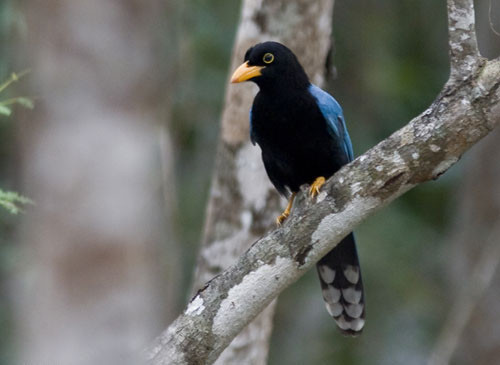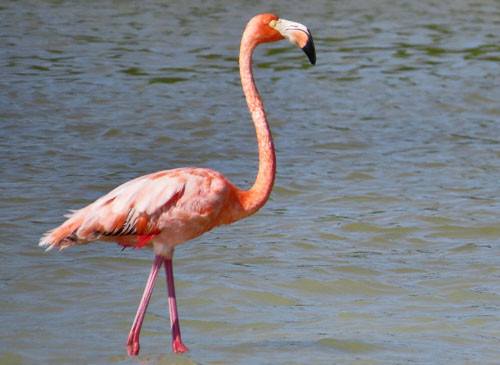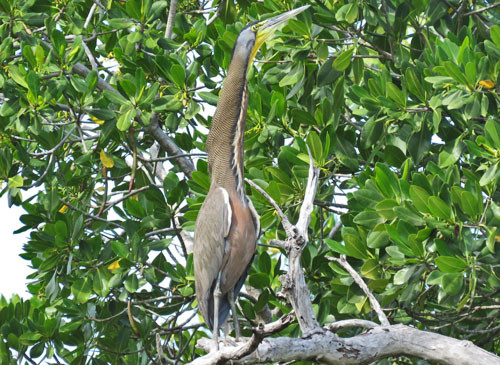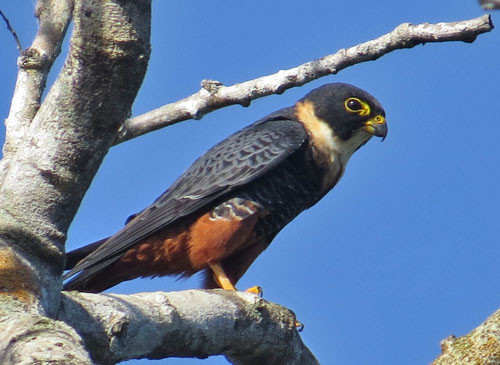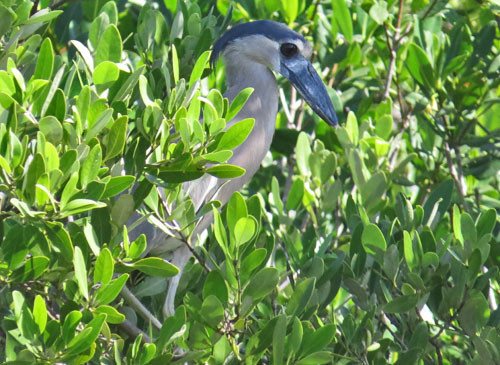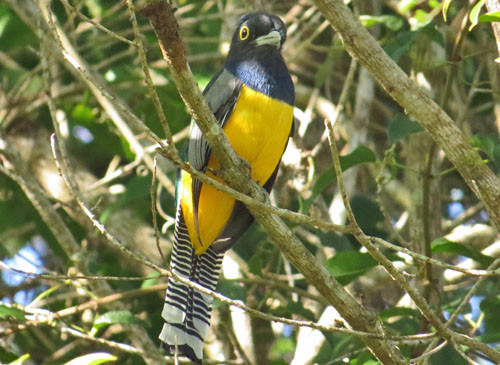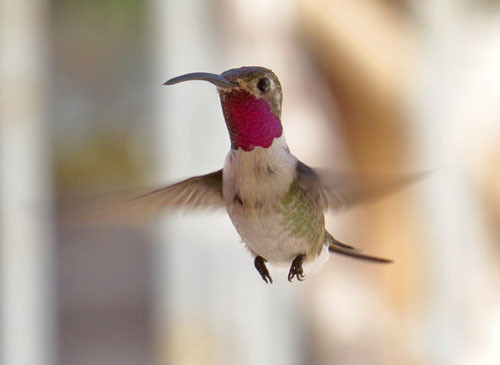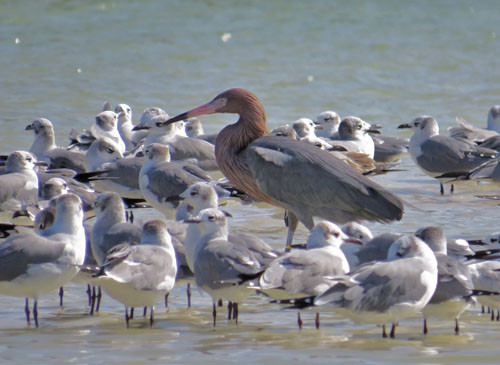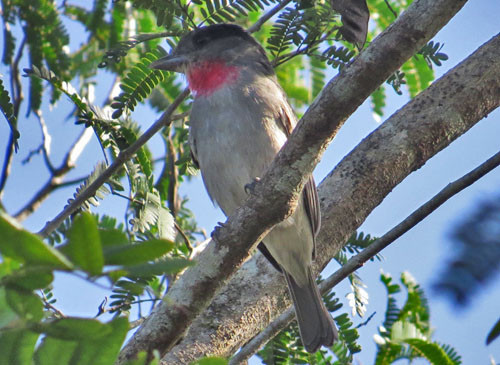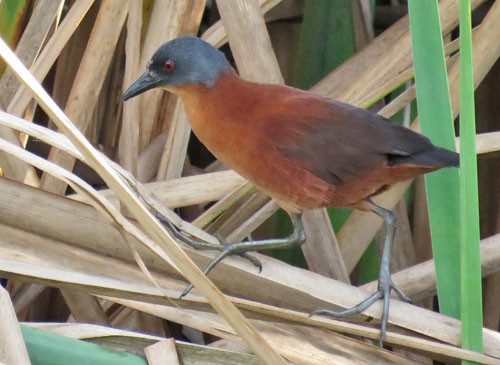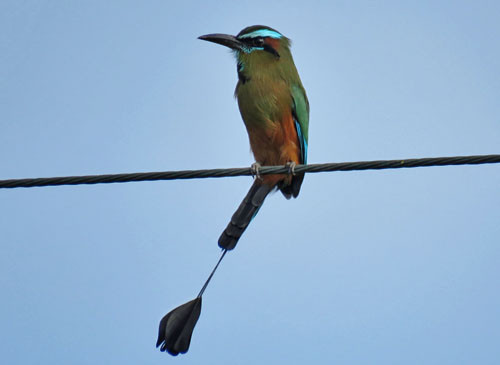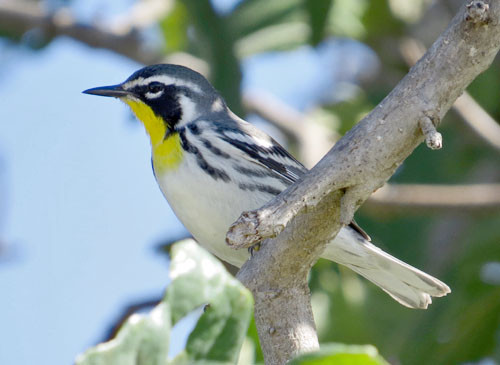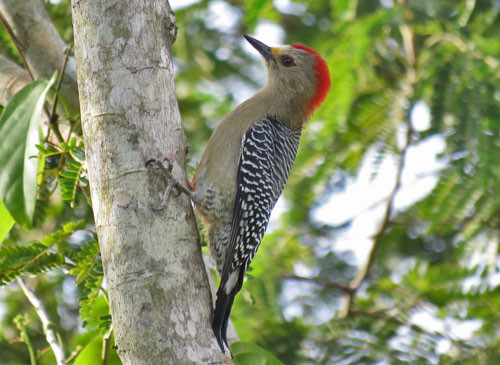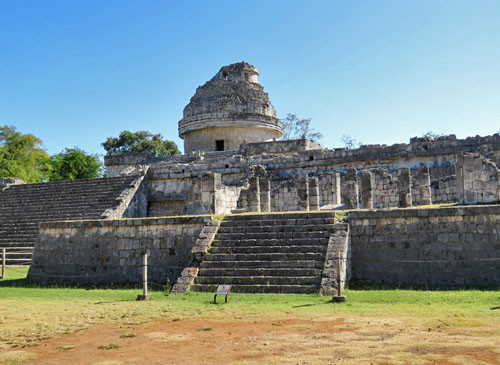 We spend a morning walking through the ruins of Chichén Itzá.
Photo: Rich Hoyer
We spend a morning walking through the ruins of Chichén Itzá.
Photo: Rich Hoyer Mexico’s Yucatan Peninsula is famous for its spectacular Maya ruins, warm climate, and delicious regional cuisine. It is also a notable center of bird endemism with species such as Black-throated (Yucatan) Bobwhite, Yellow-lored (Yucatan) Parrot, Yucatan Woodpecker, Yucatan Wren, and the recently split Yucatan Gnatcatcher. This tour distills the best of the Yucatan into a short, unhurried trip that takes in the peninsula’s dry forest, coastal scrub, lagoons, mangroves, and tall humid forest before ending on Isla Cozumel, with its Caribbean flavor, island endemics, and great snorkeling. At this season many migrant warblers from eastern North America are present, and flocks of resident flamingos feed among throngs of migrant shorebirds.
Day 1: The trip begins at 6:30 pm at our hotel south of Cancún. Night in Puerto Morelos.
Day 2: Today we’ll drive south, birding at an attractive botanical garden in the morning, and then continuing south to the town of Felipe Carrillo Puerto, our base for two nights in the Zona Maya. After lunch and a short siesta we’ll head out to bird in the forest and forest edge near town, staying out after dark in hope of encountering a Yucatan Poorwill or some other nocturnal critters. Night in Felipe Carrillo Puerto.
Day 3: We’ll have a full day’s birding in the rich forests near town, where species include Ornate Hawk-Eagle, Wedge-tailed Sabrewing, Keel-billed Toucan, Northern Bentbill, White-browed Gnatcatcher, Blue Bunting, and the very local Gray-throated Chat and Rose-throated Tanager. We even have a fair chance of coming across a swarm of army ants, which should be attended by Ruddy and Northern Barred Woodcreepers. Night in Felipe Carrillo Puerto.
Day 4: We’ll spend the morning birdwatching in the forest near our hotel, where we’re sure to add some new species. After lunch we’ll drive north to the picturesque Yucatan town of Valladolid. Night in Valladolid.
Day 5: This morning we’ll drive to the nearby ruins of Chichén Itzá, where the surrounding woodland will provide another taste of the Yucatan’s distinctive avifauna. Birds here include Ferruginous Pygmy-Owl, Cinnamon Hummingbird, Turquoise-browed Motmot, Yucatan Jay, and Orange Oriole. There will be time to view the ruins, the remains of one of the most complex of all Late Classic Maya ceremonial centers. After lunch we’ll head north toward Dzilam de Bravo, which hosts a healthy population of the recently split Yucatan Gnatcatcher. Once we are successful, we’ll head east to Rio Lagartos, our base for the next two nights. Night in Rio Lagartos.
Day 6: Today we’ll bird locally around Rio Lagartos. The arid scrub here is home to two very local endemics, the tiny Mexican Sheartail and the garrulous Yucatan Wren, both of which we should see. We’ll take a boat trip through mangrove-fringed lagoons in search of American Flamingo, Reddish Egret and Boat-billed Heron. After lunch we’ll visit nearby coastal areas adjacent to a huge salt works, home to Snowy Plover, Zenaida Dove, and flocks of migrant shorebirds that support wintering Peregrine Falcon and Merlin. Night in Rio Lagartos.
Day 7: With another morning around Rio Lagartos, we’ll bird locally targeting anything that we may have perhaps missed previously. We’ll then drive to Playa del Carmen for a ferry ride to the Caribbean island of Cozumel. Night in Cozumel.
Day 8: Mexico’s Cozumel Island has an interesting mix of Caribbean, Yucatan Peninsula, and island-endemic birds. We’ll spend a leisurely day exploring the island in search of White-crowned Pigeon, Cozumel Emerald, Caribbean Elaenia, Black Catbird, Yucatan and Cozumel Vireos, the very distinctive and endemic form of House Wren, Western Spindalis, and the distinctive races (or species?) of Bananaquit and Blue-gray Gnatcatcher. Wintering migrants include Palm, Prairie, Cape May, Yellow-throated, and Swainson’s Warblers. Night in Cozumel.
Day 9: The tour concludes this morning in Cozumel. We’ll have an optional early morning walk to look for anything we may have missed before returning to the hotel and our transfer to the airport for flights homeward.
Updated: 14 December 2023
Prices
- 2026 Tour Price Not Yet Available
- (2023 Tour Price $3,350)
Notes

Questions? Tour Manager: Erin Olmstead. Call 1-866-547-9868 (US or Canada) or (01) 520-320-9868 or click here to email.
* Tour invoices paid by check carry a 4% discount. Details here.
This tour is limited to seven participants with one leader.

